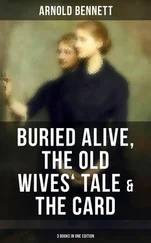You, of course, understand that the drawing is not from the object direct, but from the mental picture of it. After you have noted all the details in your mental picture, take a look at the object and see what you have missed. Then repeat, as in Exercise 1. In both of these exercises, change your objects frequently, thus gaining proficiency and giving the mind an agreeable change.
EXERCISE 3.
Begin noticing the details of things, instead of observing only the thing in its general aspect. It has been said that intelligent observation was the most difficult of arts. Do not try to “take in” a complex object in its entirety at one look, at the start. This is something that is reserved for future practice when you have developed further. Take in the details of portions of the object; rivet these in your mind, and then proceed to the next portion, and so on.
Take faces for example. Nothing is more mortifying than to forget the faces of those whom we have met, and many a man’s chances have been injured by a lack of correct observation in this direction. The trouble with most of us is that we have been endeavoring to remember faces, by observing them as a whole, paying no attention to details. Begin practicing on your acquaintances, then proceeding to strangers, and in a short time you will be surprised at your proficiency in recalling details of countenances. Notice carefully the nose, eyes, mouth, chin, color of hair, general shape of head, etc. You will find that you will be able to recall the nose of Smith, or the eyes of Brown, or the chin of Tompkins, and so on.
Before doing this, sit down and try to describe the features of some of your most intimate friends. You will be surprised at the scantiness of your recollection of them. You have never taken a good look at them, in detail. If this is so, how can you expect to remember the faces of strangers. Begin noticing everyone you meet, and studying features carefully, and then later on taking a pencil and endeavoring to jot down a brief description of their features. This exercise will prove very interesting, and you will notice your rapid improvement from the start.
Another good exercise along this line is to observe the exterior of buildings, in detail. First, try to describe some building you pass every day. You will be able to give a fair idea of its general aspect, its shape, color and so on. But how about the number of windows on each floor, the size and location of the doors, the shape of the roof, porch, chimneys, etc. How about the cornices, the trimmings, etc.? And the angles of the roof? You find that you have not really seen the house at all, do you not? You have merely looked at it. Begin now, noticing the buildings on your road, and then later in the day, endeavor to form a mental picture of the details, seeing how many you can remember of image correctly. Next day take the same building and look for new details (you’ll find many of them) and keep this up until you know something about the building in question. This is a most valuable exercise for the training of the powers of observation.
EXERCISE 4.
We have mentioned the exercise whereby “Kim” was trained. We have also told you of how young thieves are trained by a similar exercise. This same course of training may be followed by the student, with great profit, and considerable amusement, the latter being particularly the case when two or more persons practice it together. In fact, all of these exercises may be made far more interesting if two or more persons practice them together, the friendly rivalry and keen interest thus aroused being calculated to stimulate the student and sharpen the powers of observation.
The following exercise game is interesting: Place upon a table at least seven articles covered with a cloth. Remove the cloth and count ten slowly, then replace the cloth and have those taking part in the game describe the articles as fully as possible, writing down their descriptions. This can be varied by raising the cover and counting while one person alone is at the table, allowing him to retire to another part of the room to write down his impressions, while another is looking, and so on. The number of articles on the table may be increased, in time to fifty small articles. It is wonderful what a degree of proficiency in observation may be attained by some of the contestants in this manner. The tale of “Kim” and his task, while purely fiction, is certainly based upon some actual experience observed or known to Kipling, for such practices are quite common in India, a similar practice being observed by certain of the Yogis. And not only can those thus developed take part in a game of this kind, but their powers of observation become so sharpened that without effort they may see many things in their everyday life that others would not notice, and thus become quite valuable to the business with which they are connected.
In this same class of exercises, may be placed the experiment of Houdin, who walked past the store windows and then recalled the articles displayed in the windows passed. We have related this experiment in another chapter. This exercise may be practiced, as a change from the ones above mentioned. It adds variety, and also tends to develop the powers of observation and concentration while the observer is surrounded with the noises and sights of outside things. Many other exercises of this sort will suggest themselves to the student as he progresses, and he will find the subject very fascinating, after he once masters the “trick” of doing the thing.
EXERCISE 5.
We have seen a game played in the country which is an excellent means of developing the powers of observation. It is a little different from the exercises given above, inasmuch as the articles are moving and the attention must be rapidly focused upon them in order to get a clear impression. The game is played by having a person stand behind a screen or curtain, and tossing an object up in the air so that those in front of the screen may see it for a moment, above the screen, as it rapidly rises and falls. Those who have developed rapid perception will be able to describe the article with a wonderful degree of clearness and detail. Several things may be tossed up at one time, after the participants become proficient in the game.
EXERCISE 6.
An interesting exercise is the placing of a domino before the student, requiring him to name the sum total of the spots at once, instead of counting them in the ordinary way. Then try two dominos, then three, and so on. With a little practice one is enabled to give the sum total of the spots on several dominos almost instantaneously. A variation of this exercise, and one much easier to master, is to flash a playing card before the student, requiring him to name the color, suit and number of spots on the card. This may be done rather slowly at first, increasing the speed until the student barely catches a glimpse of the card as it passes before him.
EXERCISE 7.
Many persons are able to practically grasp the meaning of a paragraph of printed matter at a glance. Busy men who read newspapers have this faculty, and men and women employed in journalism are often able to grasp the sense of a page by apparently just glancing at it. Book reviewers also have this faculty. (In fact judging from the character of some of the reviews in the daily press, the reviewer does not look at the book at all.) The writer, in his editorial work, has to “go over” a mass of exchanges every month. At first this took much time, but at present a rapid turning over of leaves and a summing up of the contents of a page at a glance proves equally profitable, and he seems to almost “sense” an interesting article at first glance. It is all a matter of practice. Prof. Porter, of Yale, was said to have been able to read at a single glance nearly half a page of an ordinary textbook.
Читать дальше












